Israel Says It Retaliated Against Shots Fired From Syria At Military Drone
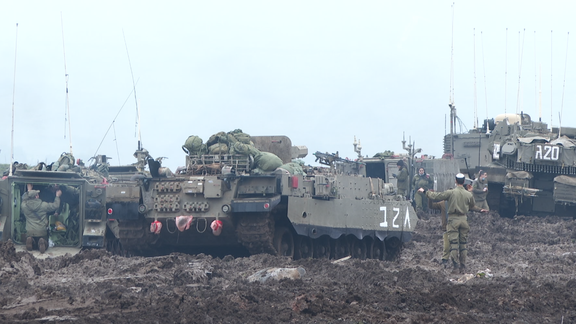
Israel retaliated against shots fired from Syria at a surveillance drone, the Israeli military said on Wednesday.

Israel retaliated against shots fired from Syria at a surveillance drone, the Israeli military said on Wednesday.
"IDF Machine Gun fire was directed towards the originating area of the shots in Syria," a statement from the military said. "The drone successfully completed its mission and no damage was caused."
Israel has for years been carrying out attacks against Iran-linked targets in Syria, where Tehran's influence has grown since it began supporting President Bashar al-Assad in the civil war that started in 2011.
Iran-backed militias have tried to set up strongpoints near the Israeli border in the Golan Heights, while the regime in Tehran openly calls for attacks against Israel.
The Israeli military also said on Wednesday that it convicted two soldiers of abusing a Palestinian man, along with additional soldiers. One other soldier was convicted of exceeding his authority to the extent of endangering life or health, it said.
Human rights groups accuse Israel of not taking strong action against soldiers who abuse their authority, particularly in the occupied West Bank.
According to the indictments, the soldiers took a Palestinian man in a military jeep and drove to a distant location, a military statement said. During the drive and afterwards, the man was abused and then left in the remote location, it said.
Report by Reuters

Iranian media are speculating on the implications of Ali Shamkhani’s replacement with Ali Akbar Ahmadian as secretary of the supreme national security council.
Etemad, one of the two leading reformist dailies in Tehran wrote in a commentary on Tuesday that Shamkhani’s replacement might have been the result of fears on the part of hardliners that following his success in forging the Beijing-brokered deal between Iran and Saudi Arabia in March, he could have played a key role in reviving the 2015 nuclear deal with the United States.
According to Etemad, "the change was swift and odd." But this was not the only thing that was strange about the shift. The development completely played out on Twitter, a social media platform that is officially banned in Iran. Yet, first Shamkhani alluded to his departure by tweeting a piece of Persian poetry. Then Supreme Leader Ali Khamenei announced the replacement on his Twitter, and finally Ahmadian started his mission as security chief by tweeting a verse in Arabic from the holy Koran.
Subsequently, social media users came up with all sorts of analyses. Some even said it was the end of Shamkhani’s political career and linked his removal from the key post to his family's alleged financial corruption. However, Khamenei quickly appointed him as his political adviser and a member of the Expediency Council, some sort of an upper house in Iran's parliamentary system.
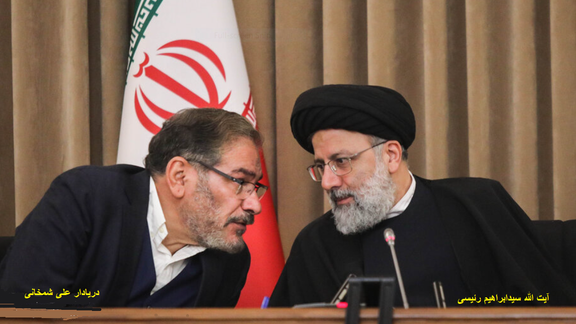
Within a few hours, many politicians including the hawkish Saeed Jalili, a Paydari Party figurehead, and a former nuclear negotiator, were mentioned as possible candidates for the post. Khamenei’s choice, however, was more pragmatic.
Another odd thing was the Raisi administration's absolute silence on the matter, other than the releasing an official announcement everyone knew was coming from Khamenei's house rather than the presidential palace.
Etemad pointed out that the execution of Shamkhani's former deputy Alireza Akbari, on charges of espionage, may have played a part in his replacement, as his hardliner political opponents were calling for his removal in recent months for the same reason.
Tehran's other leading reformist daily Shargh wrote in a long commentary on Tuesday that the change was expected for a long time. But it also pointed out that it marked the 10th anniversary of Shamkhani's presence at the security council. Khamenei usually changes his appointees at different institutions after five or 10 years. However, there are exceptions such as his representative to ultraconservative Kayhan newspaper, Hossein Shariatmadari who has kept his posts for a few decades.

Shargh wrote that regardless of Shamkhani's denial of his links to his former deputy Akbari, it was clear that the system was getting rid of Shamkhani at such a prominent position. The move, according to Shargh, started when a week after Akbari's execution, vice President Mohammad Mokhber fired Shamkhani and his relatives from the Arvand Free Trade Zone in Khuzestan.
According to Shargh, Paydari had a role in all those developments that were clearly part of the usual factional infighting in Iran. Some hardliners such as former lawmaker Hamid Rasaee openly called for Shamkhani's removal.
Critics on social media have opined that Shamkhani's appointment as Khamenei's political adviser does not necessarily mean anything. They pointed out that former Prime Minister Mir-Hossein Mousavi who has been under house arrest more than a decade now, is still officially Khamenei's political adviser! And with the caliber of other Expediency Council members, it is obvious that the appointment is only an excuse to keep Shamkhani under control like others such as former President Mahmoud Ahmadinejad.
Nonetheless, Donya-ye Eghtesad newspaper wrote on Tuesday that Shamkhani who once ran for president as a reformist candidate in 2001, is likely to prepare himself for the next presidential election in 2025. The daily pointed out that Shamkhani is not one of those politicians who would sit at the Expediency Council and do nothing.
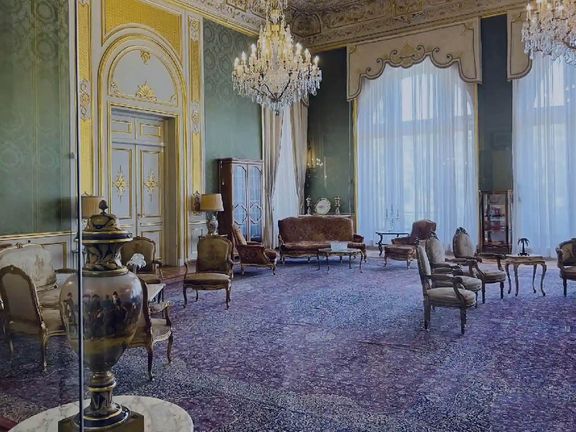
The administration of former Iranian President Mahmoud Ahmadinejad and the Revolutionary Guard have been accused in a case of the missing carpets of Saadabad Palace in Tehran.
Hardliners revealed this weak that dozens of exquisite carpets are missing from the Saadabad Palace complex in Tehran, insinuating that they disappeared during the presidency of centrist Hassan Rouhani (2013-2021).
However, "an informed source", who seems to be close to Rouhani, told ILNA news agency on Wednesday that the disappearance of the carpets dates back to the presidency of Mahmoud Ahmadinejad (2005-2013).
He claimed that those raising the issue now want to "distract minds".
“The transfer of any documents or assets in public offices follows specific instructions, and the more sensitive the centers are, the more precise these instructions are. How is it that a bundle of carpets disappeared without the permission of the security guards that operate under the supervision of the Ministry of Intelligence and the IRGC,” he added.
The unnamed source also called for the intervention of "legal and judicial authorities" in this regard.
IRGC-affiliated Fars news agency reported Monday that 48 exquisite and expensive hand-woven carpets of Saadabad Palace were removed from a building and disappeared during the administration of Hassan Rouhani.
Sadabad is a 110-hectare complex built by the Qajar and Pahlavi monarchs, located in Shemiran, north of Tehran. Today, the official residence of the President is located adjacent to the complex.
The complex was initially built and inhabited by the Qajar dynasty of monarchs in the 19th century. After extensive expansions, Reza Shah of the Pahlavi Dynasty resided there in the 1920s. His son, Shah Mohammad Reza Pahlavi, moved there in the 1970s.
Large parts of the complex are museums, which are accessible to visitors.

Despite clear evidence, the head of Iran’s nuclear program has rejected that the regime is building a deep underground nuclear facility.
Speaking to reporters after a Cabinet meeting on Wednesday, Atomic Energy Organization of Iran Director Mohammad Eslami insisted that the government would cooperate with international inspectors on any “new activities.”
“The Islamic Republic of Iran is working under the IAEA safeguards, and whenever it wants to start new activities, it will coordinate with the IAEA, and act accordingly,” Eslami said, referring to the UN nuclear watchdog, the International Atomic Energy Agency.
He made the remarks following an Associated Press report that showed the regime is building a deep underground nuclear facility near the Zagros Mountains in central Iran, close to the Natanz nuclear site, with experts claiming development “is likely beyond the range of a last-ditch US weapon designed to destroy such sites."
Describing the new claims as “bogus” and “a psychological operation” originated by Israel, Eslami added that whenever Israel finds itself stuck in difficult situations in the region, it “intensifies these psychological operations more and more." He did not elaborate on what he meant by a difficult situation.
The report analyzed expert opinions as well as satellite imagery from Planet Labs PBC to prove Iran’s activities near the Natanz nuclear site, which has come under repeated sabotage attacks amid Tehran’s standoff with the West over its atomic program. According to experts, photographs of the piles of dirt from the excavations suggest the new tunnels will be between 80 meters (260 feet) and 100 meters (328 feet) deep.
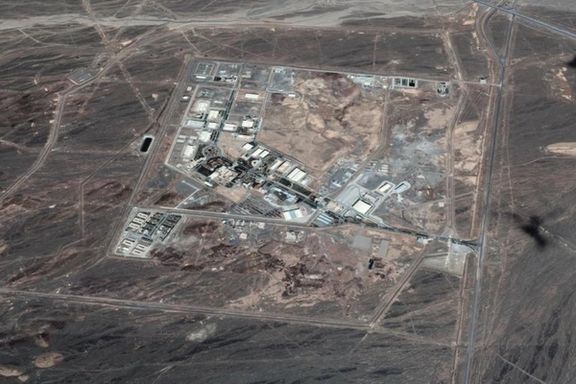
The report sparked wider conversation across the Middle East about the construction, with Israel’s national security adviser saying Tuesday the site would not be immune from attack even if its depth put it out of range of American airstrikes. Lieutenant-General Herzi Halevi, chief of Israel's armed forces raised the prospect of "action" against Iran, warning that "Iran has advanced with uranium enrichment further than ever before ... There are negative developments on the horizon that could bring about (military) action.”
The US Air Force released rare images of the weapon, the GBU-57, known as the “Massive Ordnance Penetrator,” designed to destroy weapons of mass destruction located in well protected facilities. However, it immediately took the photos down because they revealed sensitive details about the weapon’s composition and punch.
Natanz, about 225 kilometers (140 miles) south of Tehran, has been a point of international concern since its existence became known two decades ago. This is not the first time reports surface about Iran building a vast tunnel network near Natanz, purportedly able to withstand cyberattacks and bunker-penetrating bombs.
The Islamic Republic claims the new construction will replace an above-ground centrifuge manufacturing center at Natanz struck by an explosion and fire in July 2020.
Last year, the spokesman for the Atomic Energy Organization of Iran, Behrouz Kamalvandi, reacted to a report by the New York Times revealing underground work, claiming Iran had notified the UN nuclear agency of its plan to relocate the activities of the Iran Centrifuge Technology Company (TESA) complex in Karaj to the city of Natanz.
He claimed the move aimed to prevent the recurrence of attacks, referring to a recent drone attack at the TESA complex near Karaj which manufactures parts for centrifuges.
Over the years, a series of attacks has seemed to slow Iran’s nuclear activities. In 2010, the Natanz uranium enrichment facility suffered serious damage following a major cyber-attack involving the Stuxnet virus. Three years later, the Fordow enrichment site was rocked by an explosion. More recently, in July 2020, a centrifuge assembly facility was hit by an explosion and in April 2021 an explosion at the enrichment plant caused a power outage that reportedly damaged thousands of centrifuges.
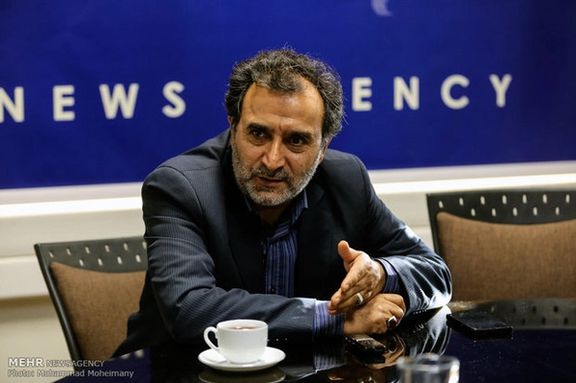
Tehran's water dispute with the Taliban must be solved through arbitration, says the country's vice president for legal issues who claimed the Afghan fundamentalists were not acting according to agreed terms.
Mohammad Dehghan said Wednesday that “we have a completely reliable treaty to solve the problem, and accordingly, we expect the Afghans to act based on the treaty.”
Due to Taliban damming to halt the flow of water from Afghanistan hundreds of thousands of civilians' lives have been badly affected in the southeastern province of Sistan and Baluchestan.
While Afghanistan says it needs dams to store water for agriculture or to produce electricity, which it imports from neighboring countries including Iran, many environmentalists are critical of large-scale water engineering projects.
The Iranian government and environmentalists argue constructing the dam on the Helmand River will deepen problems in Iran’s eastern provinces, particularly in Sistan-Baluchestan where water resources are already scarce.
Declining rainfall since late 1990s, which caused prolonged droughts in the Helmand basin, has had serious ecological, economic and social impact.
Wetlands in Sistan have largely turned into salt flats, the once rich wildlife has disappeared, and many local villages abandoned. In 2019, after nearly two decades of drought, water from Helmand reached the wetlands of Sistan and partially revived the Hamoun-e Hirmand Lake. The lake is a UNESCO biosphere reserve.
The dispute between the two countries over water is long standing but it has escalated in the past few years.
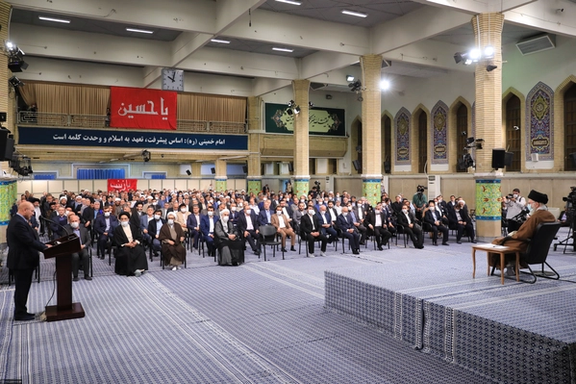
Iran’s Supreme Leader Ali Khamenei Wednesday praised the country’s “revolutionary parliament” for passing a bill in 2020 that complicated nuclear negotiations.
“From the beginning of this parliament [2020], based on information I had, I believed that it is a revolutionary parliament, and now after three years I reiterate that,” Khamenei told 290 members of the legislature.
The parliament, dominated by hardliners, passed a bill in December 2020 dubbed the ‘Strategic Action To Eliminate Sanctions and Defend Iranian Nation's Interests.’ The bill authorized higher-level uranium enrichment to force the United States to lift economic sanctions imposed in 2018, when former President Donald Trump withdrew from the JCPOA nuclear agreement.
The bill also mandated restrictions on nuclear monitoring by the United Nations watchdog, the International Atomic Energy Agency (IAEA). Since the passage of the law, Iran has further restricted international monitoring and inspections, adding to the complicated dynamics of renewing the JCPOA.
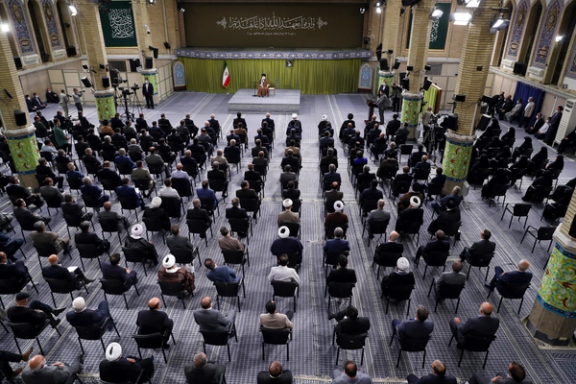
The current parliament was elected in February 2020 in a controversial vote when the Guardian Council, loyal to Khamenei, banned hundreds of relatively moderate candidates and allowed hardliners to gain a strong majority in the legislature. Few doubt that Khamenei was not aware or did not approve the engineering of the 2020 elections to pack the parliament with hardliners.
The timing of the bill in December 2020 was curious. The proposal emerged in parliament in early November just days after the US presidential election and Joe Biden’s victory. In September of that year, Biden had already announced thatif elected he would return to the JCPOA agreement to correct Trump’s “reckless” policy of dumping the nuclear deal that capped Iran’s uranium enrichment.
The Iranian regime knew that the incoming Biden administration wanted to restore the JCPOA, which would lift crippling sanctions, but nevertheless decided to pass the parliamentary law that made negotiations more difficult.
The bill’s stipulation about higher levels of uranium enrichment was not an empty negotiating tactic. Iran actually began enrichment at 20 percent in early 2021, breaking the JCPOA limit of 3.65 percent. Subsequently, enrichment was increased to 60 percent during the talks, and by all estimates, Tehran now has enough fissile material for at least two nuclear bombs. Tehran also gradually restricted IAEA monitoring access to its nuclear facilities, introducing another complicating factor into the JCPOA talks.
The government of President Hassan Rouhani initially opposed the legislation, saying it will complicate talks, but the hardliners went ahead anyway.
However, Khamenei Wednesday told lawmakers, “The Strategic Action law brought the country out of a wandering state in the nuclear issue. This law fully clarified what we needed to do.”
Negotiation to revive the JCPOA began in Vienna on April 7, 2021, between the members of the JCPOA, Iran, the United Kingdom, France, Germany, Russia and China, with the US on the side lines as Tehran rejected any direct talks with Washington.
After 11 months of talks, the Vienna process ended without success in March 2022 after the Russian invasion of Ukraine. Subsequent efforts by the European Union to bridge the gaps failed and the talks reached a deadlock in September 2020.
In the meantime, Iran’s economic crisis triggered by US sanctions got much worse, with annual inflation nearing 70 percent and the national currency losing much of its value. This and continued domestic repression led to nationwide protests in the fall of 2022, destabilizing the clerical regime, with no immediate prospect of ending sanctions.